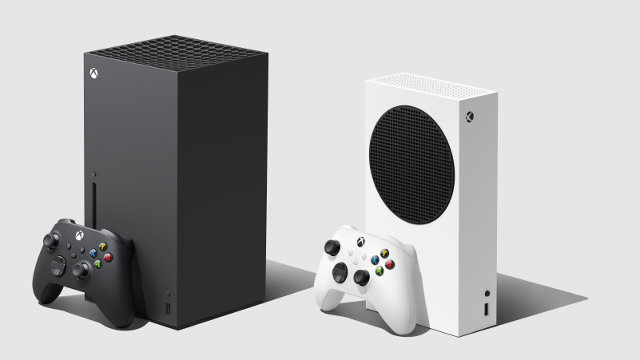Microsoft has finally revealed a proper Xbox Series X vs Xbox Series S specs breakdown and it reveals some surprising facts about its next-gen console. The biggest surprise of all, however, is that you might not need an Xbox Series X on launch day.
What are the differences between the Xbox Series X and Xbox Series S? It genuinely all comes down to the graphics. If you have a smaller television or you don’t care about having the absolutely best graphics that you can get on consoles, then you might be able to save yourself a couple hundred dollars on launch day.
Let’s start with what’s similar. The Xbox Series X vs Xbox Series S specs chart shows that both consoles have nearly identical processors; the only difference is that the Xbox Series X is clocked at 3.6 GHz and the Xbox Series S is clocked at 3.4 Hz. Both consoles have the same SSD speed, the same capability for storage expansion, and the same backwards compatability options (minus the disc drive on the Xbox Series X).
The Last of Us 2 Safe Codes
| Section | Chapter | Location | Safe Code |
|---|---|---|---|
| Jackson | Patrol | Supermarket | 072013 |
| Seattle Day 1 (Ellie) | Downtown | Courthouse | 860722 |
| Seattle Day 1 (Ellie) | Downtown | Bank | 602306 |
| Seattle Day 1 (Ellie) | Downtown | Gate West-2 | 0451 |
| Seattle Day 1 (Ellie) | Capitol Hill | Furniture Store | 550133 |
| Seattle Day 2 (Ellie) | Hillcrest | Hillview Garage | 308265 |
| Seattle Day 2 (Ellie) | The Seraphites | Apartment Building | 100883 |
| Seattle Day 2 (Ellie) | The Seraphites | Weston's Pharmacy | 385523 |
| Seattle Day 3 (Ellie) | The Flooded City | Warehouse | 701264 |
| Seattle Day 1 (Abby) | On Foot | Warehouse | 173807 |
| Seattle Day 1 (Abby) | Hostile Territory | Jasmine Bakery | 689689 |
| Seattle Day 1 (Abby) | The Coast | Ferry | 807701 |
| Seattle Day 2 (Abby) | The Shortcut | Apartment | 302304 |
| Seattle Day 2 (Abby) | The Descent | Hotel Bloeray | 121879 |
As for the differences, that’s where you’ll make the decision of which console to buy. The Xbox Series X caps out at 16GB GDDR6 RAM, but the Xbox Series S only has 10GB of GDDR6 RAM. The Xbox Series X also has a 1 TB SSD versus a 512 GB SSD on the Xbox Series S. Of course, the Series S is entirely lacking a disc drive, so you may not have an option if you have a large library of discs sitting around.
Beyond these relatively tiny technical differences, the key factor separating the two is all about the graphics as shown in the Xbox Series X vs Xbox Series S specs chart. While both consoles have an AMD RDNA 2 GPU, they have a serious power difference. The Series X cranks out 12.5 TFLOPs of graphical power with 52 CUs at 1.825 GHz whereas the Series S only manages less than 1/4th of that: 4 TFLOPS of graphical power with 20 CUs at 1.565 GHz.
What does this mean in practical terms? On average, an Xbox Series S can manage 1440p resolution from 60–120 FPS whereas an Xbox Series X manages 4K resolution at 60–120 FPS. How these consoles will actually perform will depend on the games, how much stuff is on screen, and how well the developers manage to make use of the console’s power. If you already have a 4K TV, it may well be worth it to get an Xbox Series X. If you don’t, then the Xbox Series S will certainly be an affordable, attractive option for most gamers.











